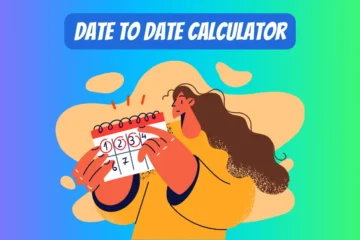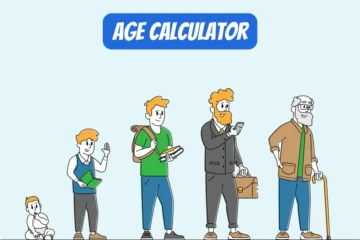Calculate the historical age between any year and present day
Definition of AD and BC
AD (Anno Domini) a.k.a. CE (Common Era) refers to the years after the birth of Jesus Christ, while BC (Before Christ) denotes the years before His birth.
How to use: Select the era (BC or AD), input a year, and click “Calculate Historical Age” to see the historical age and timeline visualization.
BC and AD Timeline
Table of Contents
How to use this AD and BC Age Calculator
- Enter the Year: Type the year you’re interested in calculating the age from into the designated input field.
- Select the Era: Choose between “AD” (Anno Domini) and “BC” (Before Christ) from a dropdown menu to specify the era of the entered year.
- Calculate: Click the “Calculate” button to compute the number of years from the entered year to the current year.
- View Results: The result will display directly below the button, showing the total years elapsed, and a timeline visualization will appear, graphically representing the span from the entered year to today.
Definition of AD and BC
- AD (Anno Domini): Latin for “In the Year of Our Lord,” referring to the years following the estimated birth of Jesus Christ. It is used in the Gregorian calendar to label or number years after Christ’s birth.
- BC (Before Christ): Refers to the years before the birth of Jesus Christ. In this system, the year numbers count downwards as one moves backward from the assumed year of Christ’s birth.
AD and BC Timeline
The AD and BC timeline is a linear representation of time, extending indefinitely in both directions. BC dates count backward to zero, which is traditionally thought to be the year immediately preceding the birth of Jesus (though there is no year zero in the Gregorian calendar), and AD dates count forward from 1 AD onwards. This timeline allows historians and scholars to place events in a chronological sequence from ancient times through the present day.
Where to use this AD and BC Age Calculator
- Educational Institutions: Helps students learn about historical chronology.
- Historical Research: Assists researchers in dating and comparing historical events.
- Museums: Enhances exhibits by providing clear timelines of artifacts and events.
- Archaeological Studies: Useful for archaeologists to determine the time periods of their finds.
- Documentaries: Supports filmmakers in displaying timelines related to historical topics.
- Publications: Helps authors of history books visualize and explain time intervals.
- Online Education Platforms: Integrates into tools for teaching history and civilization courses.
- Libraries: Assists patrons in researching historical periods.
- Cultural Heritage Sites: Offers visitors detailed timelines of the site’s historical significance.
- Travel Guides: Helps in explaining the historical importance of various sites to tourists.
- Genealogy Research: Useful for genealogists tracing lineage through different eras.
- Historical Novels: Assists writers in setting accurate dates for their narratives.
- Academic Conferences: Provides a quick reference for scholars discussing historical periods.
- History Blogs: Bloggers can use it to detail timelines in posts about historical events.
- Social Studies Classes: Aids in teaching students the concept of eras and historical dating.
- Cultural Anthropology: Helps anthropologists in comparing cultures from different eras.
- Historical Reenactments: Useful for organizers to accurately set the period of events.
- Television Shows: Utilized in the production of historical and period dramas.
- Interactive Exhibits: Integrated into interactive displays at educational centers.
- Themed Events: Helps event organizers ensure historical accuracy in date-specific themes.
- History Competitions: Used as a reference tool for quizzes and competitions.
- Professional Development for Educators: Included in workshops and seminars about teaching history.
- Historical Fiction Critique: Assists critics in verifying historical accuracy in fiction.
- Timeline Creations: Useful for creating detailed and accurate timelines in various media.
- Family History Projects: Aids individuals in placing family events in historical context.
Enjoyed using this tool? Explore our other Date and Time Tools.








